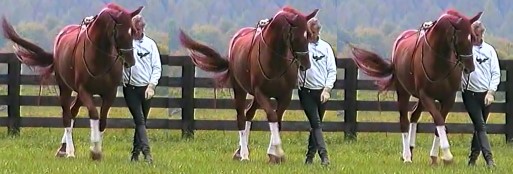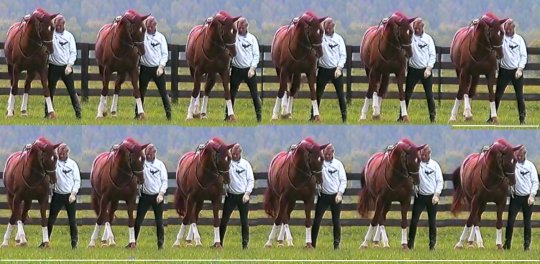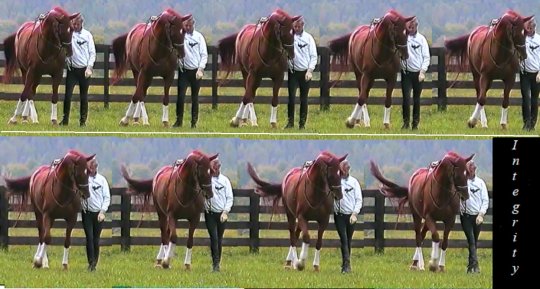Integrity
Integrity
Jean Luc Cornille

In pure physics, tensegrity is subtle orchestration between vibration and strength. But the word tensegrity includes integrity. No muscle work individually. Our brain maps our body all at once, and fascia connects our whole physique. Riders have tried for centuries to create harmony, refining each body part, but the greatest artists have furthered their body control reaching a higher faculty of the mind. I talk about and encourage high concentration, but the concentration is just a process of unveiling a faculty of mind that furthers our physical capacities. The purpose of the science of motion's work in hand is to open our minds to higher faculty.
The first thing one sees watching the picture series is synchronizing the horse and the trainer's legs. This is a detail. It is just a way to refine the harmony of movement between the horse and us. Slowing down is another tool allowing to reach, for the horse and for the human, a level of body control and concentration that is the portal for a higher faculty of the mind. Unfortunately, the science of motion's in-hand approach is imitated for the look without understanding the faculty of mind that the horse is willing to teach us. One can walk slowly next to the horse, and nothing happens. The real work is the refinement of the details through the integrity of our physique, refining the integrity of the horse's physique.
This is the fundamental value of the science of motion's work in hand. This is the therapeutic value, as well as the practical application of riding the horse. Moving from the antiquated equitation of the rider's aids, that we refer to as the equitation of gestures, to an equitation of integrity and subtle nuances in muscle tone, is easier through a virgin land, a situation that has not been soiled by principles that have not evolved with knowledge. The science of motion's work in hand is exploring a dialogue via harmonic tensegrity that has nothing to do with the traditional obedience to the hands and whip. One can, of course, mimic the science of motion's work in hand using the hands and the whip; one needs a large imagination as what one thinks happens with the horse only happens in one's imagination.


If you look at this series, the most important frames are underlined with a white line. They are not the most spectacular about legs synchronization. They are the moment when a sudden acceleration of gravity in Lafayette physique demanded an adjustment in my body's tone.
As Lafayette alights the left front leg, he shifts his body over the left front leg faster than I expected. I bent my vertebral column a little to absorb the move. Still, I had to adjust the overall tone to stimulate the same adjustment in Lafayette extrinsic muscles and muscles of his thoracic area. He did, and we continued the move in harmony.
We have the capacity to work at this level of sensitivity, and the horse acts as if he waited centuries for us to understand that this refinement is his comfort zone. The horse is like us; he can live a dumb life if he works at the level of natural reflexes, exactly as we can live a dumb life if we remain at the level of obedience to the aids. We can meet at the level of the horse's true comfort zone and realize that this level is the actual reason why we love the horse. We know intuitively that the true dialogue is not at the level of obedience, but traditional education downgrades us below our intuitive mind and brainwashes us that low is true.
Done as an art, in the sense that we explore beyond the rules and embrace a higher level of thinking, the horse taught us how life with the horse could be and how life, in general, could be.
Jean Luc


